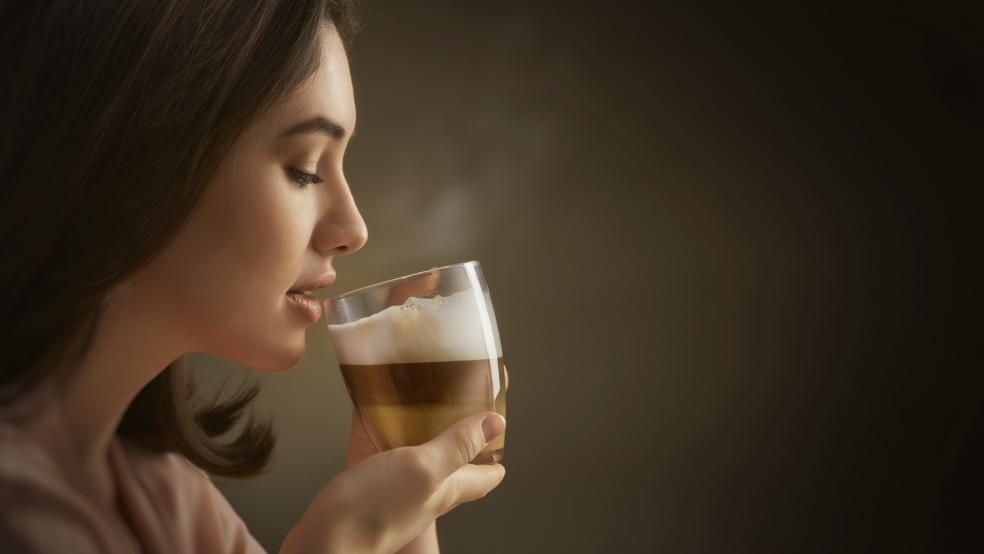Imagine a product with a $26 billion U.S. market. A single ingredient accounts for 98 percent of its composition. Yet the product's entire value proposition is determined by the quality of the other 2 percent. Anyone see an opportunity here?
Specialty coffees--brewed from beans cultivated in special microclimates and sold by everyone from Starbucks to Stumptown--make up 55 percent of the $48 billion U.S. coffee market, according to the Specialty Coffee Association of America. Their variety is legion. Hacienda La Esmeralda beans are grown in the shade of guava trees on a mountainside in Panama. Kopi Luwak beans have passed through the digestive track of a Vietnamese weasel.
You buy the expensive beans. You buy the expensive grinder. You buy the expensive coffee maker. Then you turn on the faucet and add tap water.
Related: 5 Unusual and Delicious Coffee Drinks You Could Be Trying Soon
Frank Manale is a water guy. In 1996 he founded Toxicological & Environmental Associates (TEA), a $10 million engineering company that cleans up groundwater. Manale was on a business trip in 2011 when, while watching TV in a hotel room, he stumbled across a documentary about coffee. With so many innovations in the industry, he wondered why no one was trying to improve the single ingredient that composes almost the whole cup of java.
"I knew you could take minerals out of water," says Manale. "There are also minerals which, when blended in, extract the oils from ground coffee better than tap water. That enhances the flavor and the aroma. I said, let's make water that produces the best cup of coffee possible."
Manale spent more than a year researching the chemistry and markets for both coffee and water. Preoccupied with his job at TEA, he eventually handed off day-to-day work on the project to his brother-in-law, Rob Vidacovich. Together, the two arrived at a formula that extracted from water such minerals as lead, fluoride and chlorine; added magnesium and potassium; provided optimal concentrations of calcium and zinc; and left no residue on brewing equipment. They created the product with help from the chemistry department at Louisiana State University and a commercial lab in New Orleans.
Related: Starbucks’ Pumpkin Spice Latte Is Almost Back, but Superfans Don’t Have to Wait
Vidacovich then located a vendor of eco-friendly packaging that could make cartons in the requisite size and shape. The vendor was in Florida, which dictated that the base water would come from the municipal supply there. That required a return to the lab for some rejiggering. "The composition of water from one spot to the next--even within one city--may be completely different," says Vidacovich. "We knew the composition of the water we wanted" and adjusted the formula for the Florida base. (The company expects to eventually move production closer to its headquarters in Baton Rouge.)
Grounds for optimism
In January, Aquiem debuted its coffee-optimized water in upscale groceries in Louisiana. Two other co-founders--Jerri Manale, who is Frank's wife; and Mitzi Barber, a friend--conducted in-store taste tests using both tap and bottled water. "Whatever they are doing does make the coffee taste better," says Blaise Calandro III, assistant manager at the two-store Calandro's Supermarket, in Baton Rouge, "We have a local coffeemaker who has a very distinct blueberry flavor in their beans. And making it with Aquiem really enhances that flavor. It tastes fresher."
Related: Coffee Shortage Spurs Counterfeit Grinds
Aquiem costs about $2.50 for a one-liter carton in stores, or a titch below $3 with shipping from the company's website, where it is packaged in cases of 12. That works out to around 40 cents a cup, which sounds like a lot. But the caffeine cognoscenti may not flinch. (The product is also excellent for tea or for drinking straight.)
"We are selling $14, $15 bags of fair trade single-source beans," says Calandro. "When customers are spending that much money and doing their own special grinds and using really expensive espresso makers, they are looking for how can I trick this up further and make my coffee the best it could possibly be?" Calandro says Aquiem has done well in both of his family's stores and expects sales to ramp up as temperatures cool.
Manale points out that with the U.S. market for bottled water topping $15 billion, consumers are used to paying for the stuff. Meanwhile, he says, droughts in states like California and Arizona and contamination crises like the one in Flint, Michigan have "made people realize that water is not as universal as they think." He also expects Aquiem to command a premium for its health benefits. The product's 7.6 pH soothes reflux-roiled stomachs, Manale says.
Most Aquiem drinkers may never even see the price. Though the four founders (who are still the company's only employees) chose retail for their proof-of-concept, strategically it is not their main focus. "Our biggest target at this point is luxury hotels, because of the volume," says Barber. "We are talking to distributors and individual five-star hotels. We think it needs to go next to the coffee maker in the rooms." (Selling to restaurants or coffee shops that use commercial machines through which water is plumbed is a trickier proposition.) The company has just begun its pitch to the hospitality market and hopes to make waves at the upcoming International Luxury Hotel Association conference, in Washington D.C., where it will have a booth.
Vidacovich projects the startup, bankrolled by Manale with $400,000 in savings, will crack $1 million in a year to 18 months. "The advantage is there is no competition," says Vodovich. "The disadvantage is no one is aware this product exists."
This article originally appeared in Inc.com.
Read more at Inc.com:
This Founder Lost a Starting Job to Peyton Manning--But He Still Makes Millions
What the World's Best Scrabble Player Can Teach You About Solving Problems
How a DMV Transformed Customers From Cringing Haters to Raving Fans




